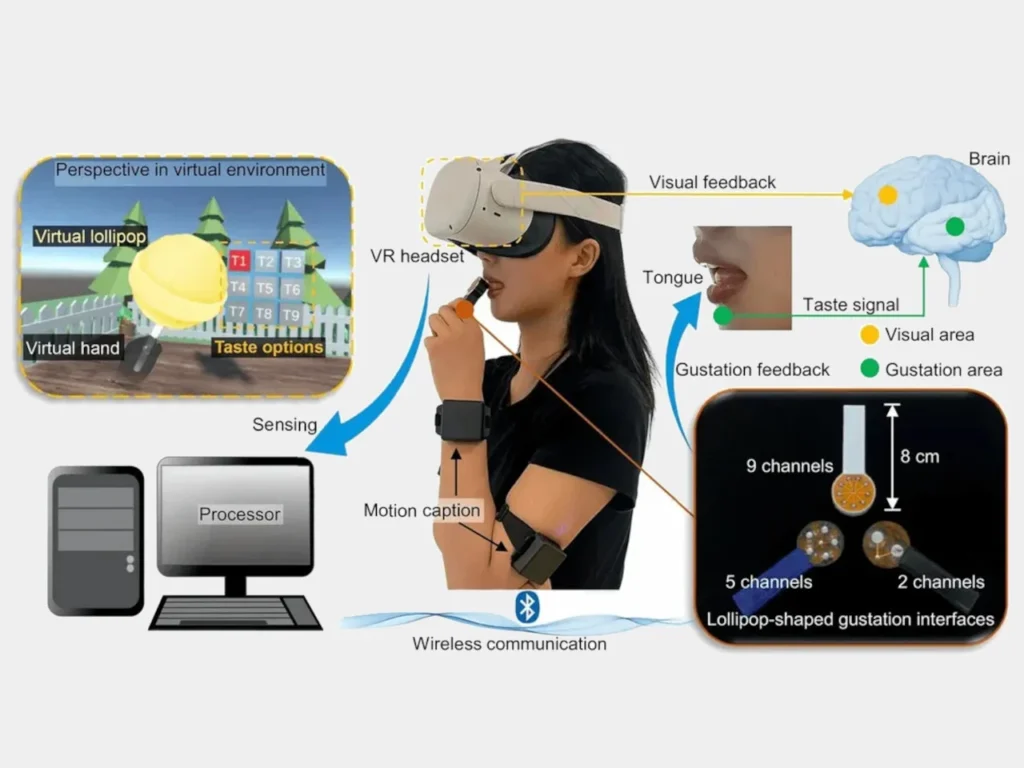In the ever-evolving landscape of extended reality (XR), the quest to create fully immersive experiences predominantly focuses on visual and auditory stimuli. However, a recent innovation from biomedical engineers at the City University of Hong Kong aims to expand this sensory horizon by introducing taste into the virtual realm – tastes in VR. Their development of lollipop-shaped, lickable devices seeks to simulate various flavors, thereby enriching the immersive quality of virtual reality (VR) environments.
The Challenge of Simulating Tastes in VR
While XR technologies have made significant strides in replicating sights and sounds, emulating the sense of taste presents unique challenges. Taste is complex and traditionally categorized into basic groups such as sweet, sour, salty, and bitter. Reproducing these sensations without food requires innovative approaches, particularly in VR settings where physical interaction with real objects is limited.
The VR Lollipop: Design and Mechanism
The proposed solution involves a device resembling a thick lollipop intended for users to lick during VR experiences. The core technology comprises tiny gel pouches that interact with saliva to produce specific flavors when activated by low-voltage electrical currents. Each gel pouch is formulated to replicate a distinct taste, including salt, sugar, milk, cherry, citric acid, green tea, passion fruit, grapefruit, and even durian. The intensity of these flavors can be modulated by adjusting the electrical voltage applied to the gels. However, the current design limits each flavor’s duration to approximately one hour, necessitating further research to extend this timeframe and expand the range of replicable tastes.
Integrating Taste and Smell for Enhanced Immersion
It’s important to note that taste is closely linked to the sense of smell; olfactory cues significantly influence flavor perception. For instance, nasal congestion can dull taste sensations, while unpleasant odors can suppress appetite. Therefore, a comprehensive approach to simulating tastes in VR would also involve recreating corresponding scents. This integration could present additional challenges, especially with complex aromas like durian.
Potential Applications and Future Directions

The introduction of taste simulation in VR opens avenues for various applications. Culinary training programs could utilize this technology to teach flavor profiles without the need for physical ingredients. Entertainment experiences, such as virtual dining or immersive storytelling, could be enhanced by adding gustatory elements. Moreover, this technology could benefit individuals with dietary restrictions, allowing them to experience certain flavors without actual consumption.
However, licking a device may raise concerns regarding hygiene and user comfort. Addressing these issues will be crucial for the widespread adoption of such technology. Additionally, the current flavor duration and variety limitations highlight the need for ongoing research and development.
Wrapping Up
The development of lickable, lollipop-shaped devices represents a significant step toward a more holistic sensory experience in virtual reality. By tackling the complexities of taste simulation, researchers are pushing the boundaries of what XR technologies can offer. As this field progresses, we can anticipate more sophisticated and immersive applications that engage multiple senses, bringing virtual experiences closer to the richness of real-life interactions.



